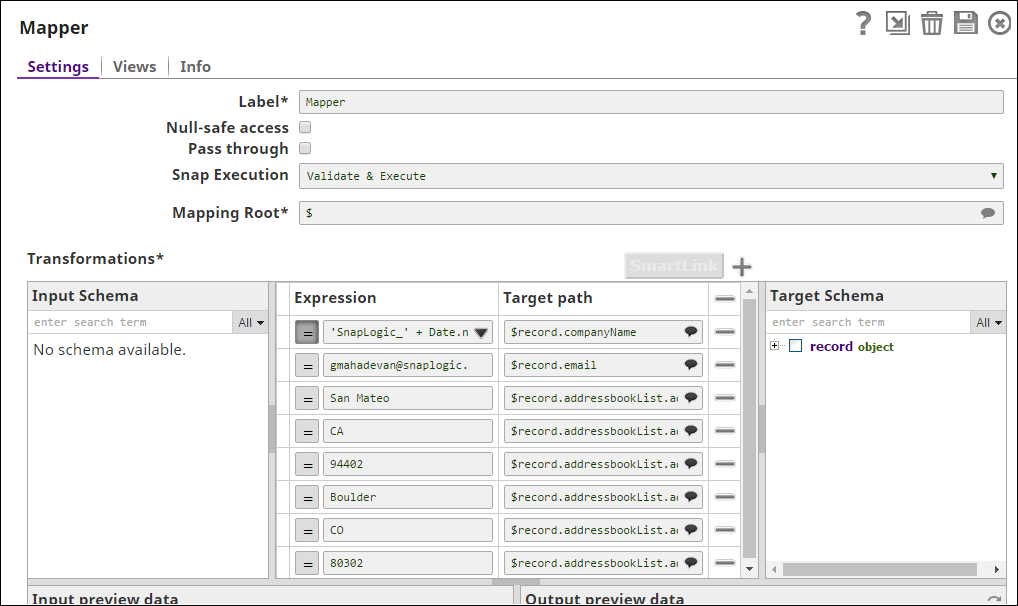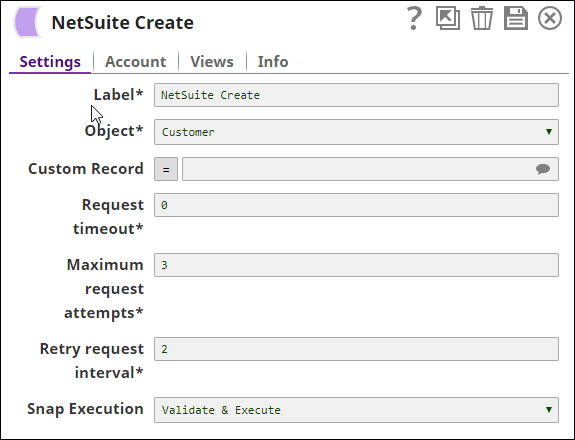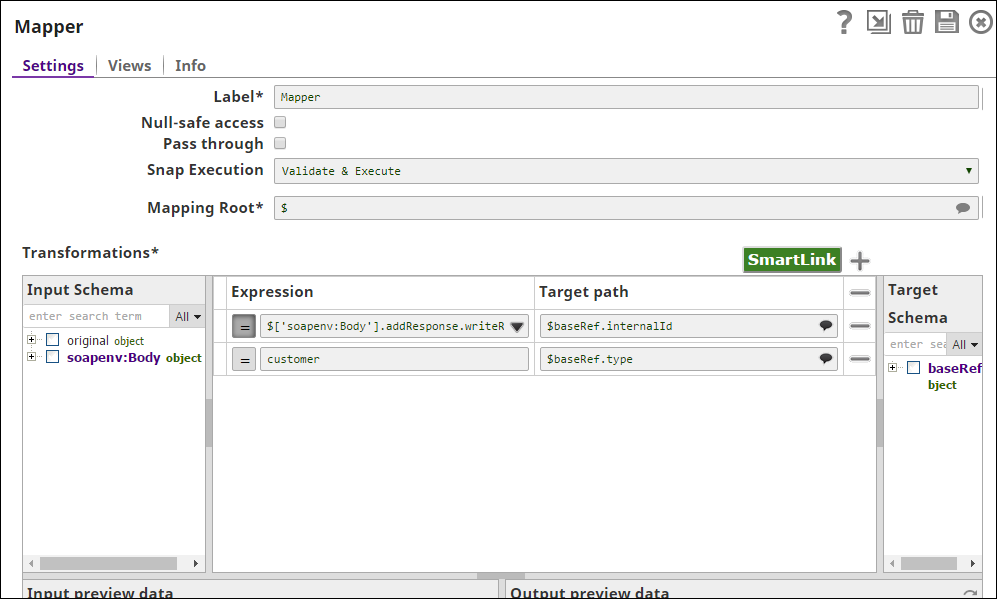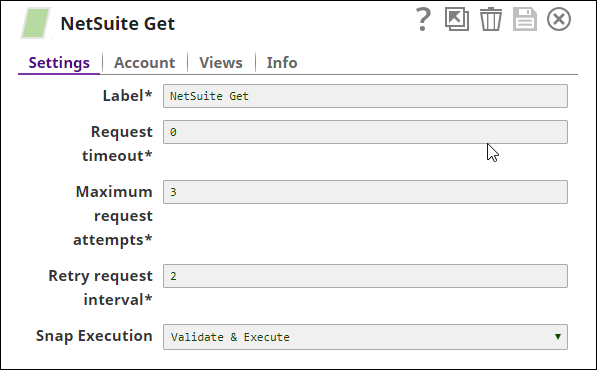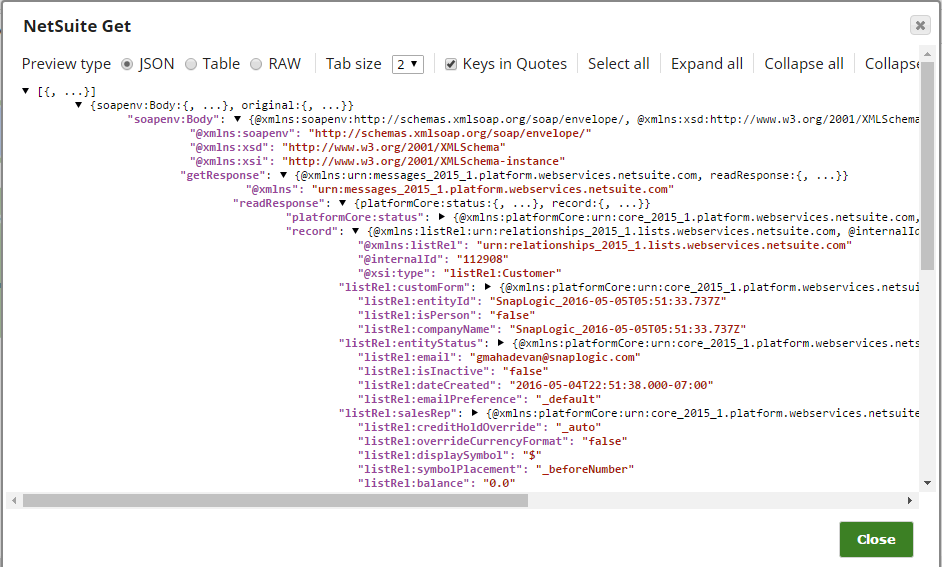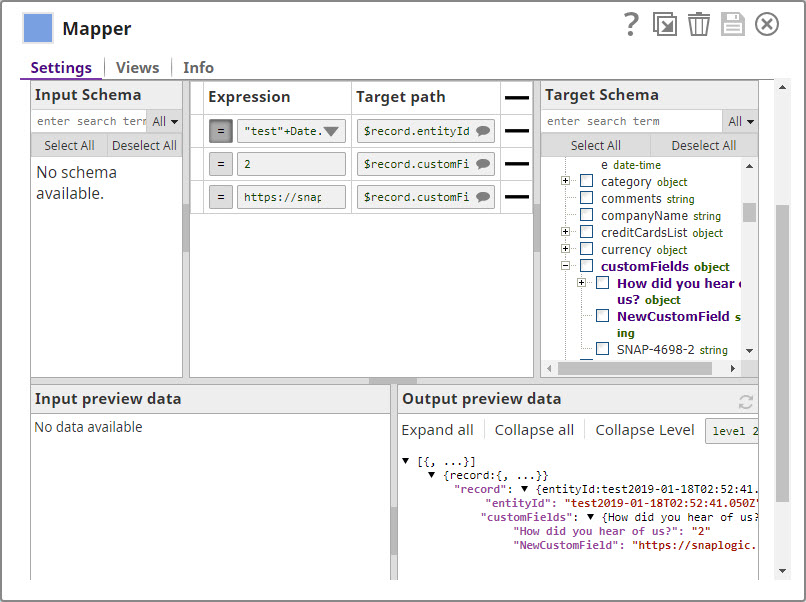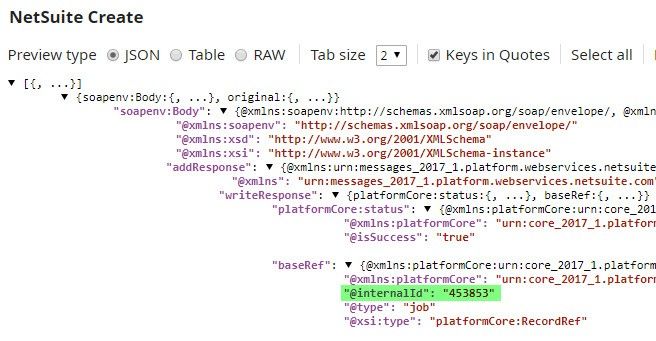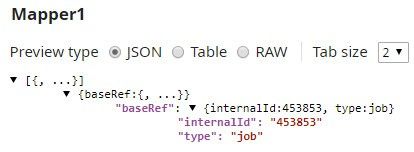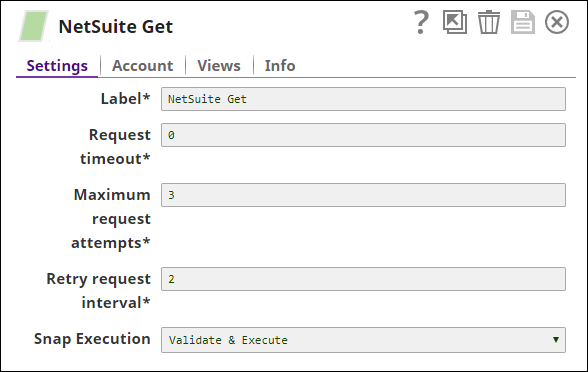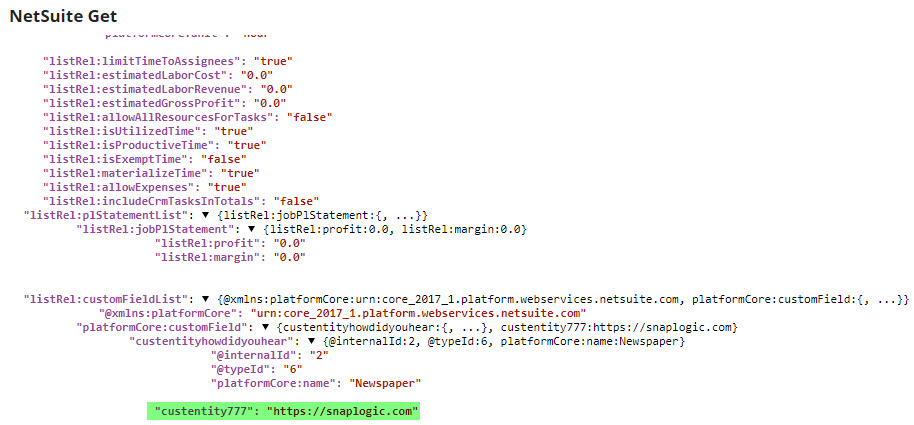On this Page
Overview
Snap type: | Read | |||||||
|---|---|---|---|---|---|---|---|---|
Description: | This Snap gets a particular record based on the given internal ID and object type. The object becomes suggestible once the account is defined. The fields that can be set on the object are provided on the input view of the Snap and can be mapped using an upstream Mapper or Structure Snap. This Snap dispatches one request per incoming document.
| |||||||
| Prerequisites: | [None] | |||||||
| Support and limitations: | Works in Ultra Pipelines. | |||||||
| Known Issues: | This Snap currently does not support custom records. | |||||||
| Account: | This Snap uses account references created on the Accounts page of SnapLogic Manager to handle access to this endpoint. See NetSuite Account for information on setting up this type of account. Error rendering macro 'excerpt-include' : No link could be created for 'Configuring NetSuite Accounts'. | |||||||
| Views: |
| |||||||
Settings | ||||||||
Label | Required. The name for the Snap. You can modify this to be more specific, especially if you have more than one of the same Snap in your pipeline. | |||||||
Request timeout | Required. The timeout for the web service call (in seconds). A value of 0 indicates no timeout. Example: 0 | |||||||
Maximum request attempts | Required. Specifies the maximum number of attempts to be made to receive a response. The request is terminated if the attempts do not result in a response. Default value: 3 | |||||||
Retry request interval | Required. Specifies the interval (in seconds) between two successive requests. A retry happens only when the previous attempt resulted in an exception. Default value: 2 | |||||||
Snap Execution | Select one of the three modes in which the Snap executes. Available options are:
| |||||||
This Snap does not currently support custom records.
Examples
Retrieving an Employee Record Using Employee Internal ID
In this example, you search for and retrieve an employee record using employee internal ID.
Creating and Updating Customer Records in NetSuite Using Custom Objects
NetSuite enables you to create custom objects, and you can use the NetSuite Create Snap to update these records. This example demonstrates how you can do so.

